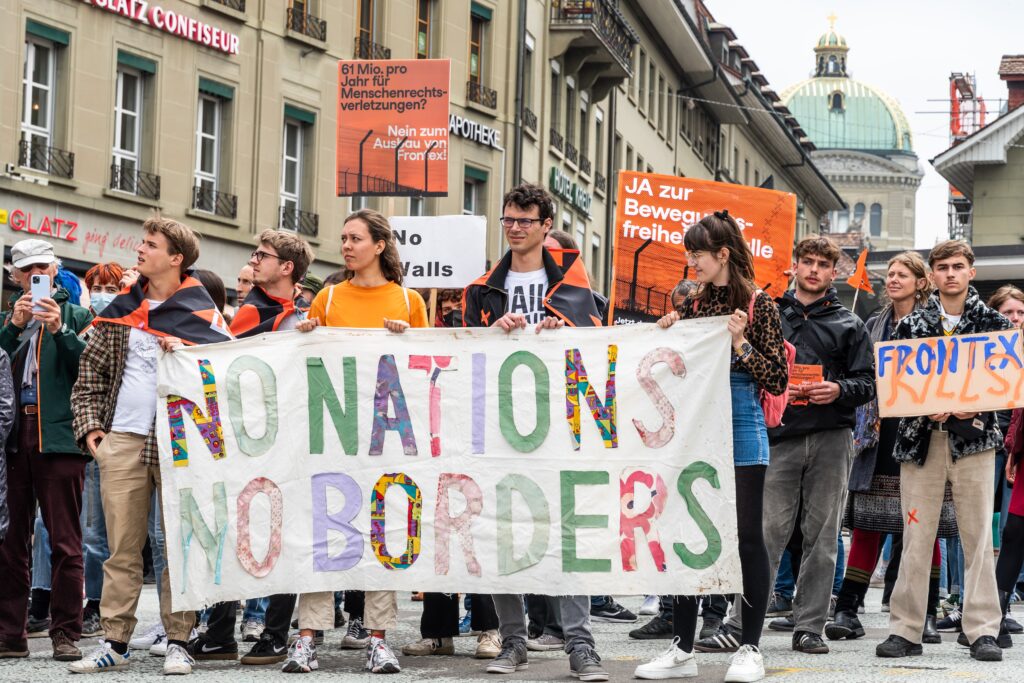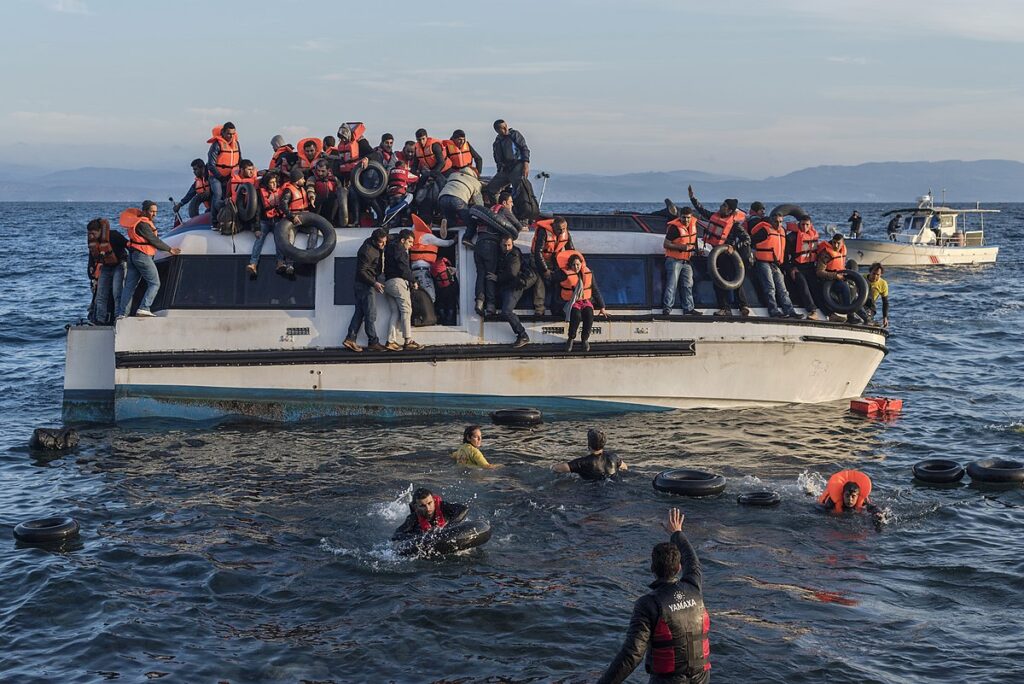Migration is a sensitive topic in the European Union (EU). The influx of immigrants across the EU’s southern and eastern borders has sparked debates over national identity and cultural cohesion, as member states grapple with the challenge of integrating diverse populations. Simultaneously, economic concerns and disparities among member states have fueled tensions, with some countries perceiving immigration as a burden on social services and job markets. Recent and ineffective immigration policies have strained EU solidarity, leading to discord on issues ranging from border control to the distribution of asylum seekers.

The latest attempt to improve the EU strategy on immigration is the New Pact on Migration and Asylum, first proposed by the European Commission in September 2020 and planned for conclusion before the end of the current legislature of the European Parliament. Last month, on 4 October 2023, member states reached an agreement on the proposed regulation which is designed to deal with situations of crisis and force majeure.
The policy problems
The issue of migration is a complex one, necessitating a policy approach that considers various parallel facets. Safety, state preference, state capacity, and adherence to international law are paramount considerations in crafting an effective migration policy. The migration wave of the 2010s, notably the crisis of 2015, marked by the arrival of nearly one million refugees and migrants in Europe, particularly via the perilous Mediterranean route, exposed critical flaws in the EU’s migration policy. The staggering loss of lives during these journeys underscored the urgency for a more robust and coordinated response. The EU faced widespread criticism for poorly designed response mechanisms that impeded timely and effective solutions.

The EU’s policy response to the refugee crisis of the mid 2010s revealed a series of critical issues. The policy of ad hoc or voluntary solidarity within the EU relocation scheme proved largely insufficient. Limited intra-EU solidarity placed a high burden on few member states and triggered dramatic situations in which refugees were placed in precarious conditions. Frontline countries were found to violate migration laws and Frontex, the EU’s border control agency, failed to address fundamental rights violations and reduce the risk of similar violations in the future. Additionally, there was a lack of organizational capacity and resources available in refugee camps, exacerbating the difficulties faced by those seeking asylum.
Amidst the crisis, member states engaged in negotiations with transit or departure countries, for support in managing migration flows. However, this ‘externalization’ of migration policy, carries with it concerns over human rights and rule of law violations.

Meanwhile, demographic decline forms an increasingly pivotal factor, insofar as all EU countries are facing ageing populations and declining birth rates. This shift underscores the pressure member states face to reconcile economic needs with social and cultural considerations in the ongoing development of EU migration policies.
Altogether, these criticisms underscore the need for a reevaluation of existing policies and the development of more agile frameworks capable of addressing the dynamic challenges posed by migration on both humanitarian and policy fronts.
Core elements of legislation under the New Pact
The 2020 Commission proposal aims to establish a comprehensive framework for managing migration flows across the EU’s borders. Serving as the primary document for migration management, it delineates a clear agenda and timeline, outlining specific actions to be implemented.

The Pact proposes to amend two existing legislative initiatives namely a revised asylum procedures regulation and the revised Eurodac regulation. It also introduces three new regulations: one on screening third-country nationals at the external borders; another on asylum and migration management; and a third one on crisis and force majeure regulation. The proposal includes four non-binding recommendations addressing various settings, including crisis management, resettlement, humanitarian admission, and complementary pathways. Additionally, the recommendations cover search and rescue operations conducted by private vessels and guidance on the Facilitation Directive about illegal immigration.
On 8 June 2023, the Council reached an agreement on the Asylum and Migration Management Regulation (AMMR), which is envisioned to replace the current Dublin regulations. This agreement centers around a new solidarity mechanism, combining flexibility with responsibility. Under the regulation, each member state would be assigned a quota of irregular migrants and refugees arriving to the EU but would not be required to take them in. Should the member state be unwilling to receive them, then it would be able to offer a financial contribution instead, which would be allocated to improving member state capacity. The AMMR also includes measures to discourage asylum-seekers from seeking protection or permanent resettlement in a country other than the first port of call. . This clarifies the responsibilities of member states which act as entry points.
The Council also reached an agreement on the Asylum Procedure Regulation (APR), which commits to improve and standardise the asylum procedure across the EU. This includes time limits for registration, processing decisions, and appeals for asylum claims. The APR covers mandatory border procedures too, designed to allow for a quick assessment at the EU’s external borders of the admissibility of applications.

Additionally, EU member states reached an agreement concerning the management of crisis and force majeure situations. Such rules are in cases of mass influx or the instrumentalization of migrants, and are designed to swiftly ease the burden on overstrained national administrations. A member state in crisis may request solidarity from another in the form of relocation, support in examining asylum claims, or financial assistance
The Commission’s revised proposal for Eurodac – a database of asylum seekers’ fingerprints – is intended to improve the implementation of the New Pact. Provisions include simplifying access for law enforcement officials, collecting more data on asylum seekers, and providing greater assistance to control unauthorised movements. The Council approved a mandate for negotiations with the European Parliament on this matter in June 2022.
Future developments
All Council agreements will form the basis of negotiations with the Parliament before these regulations are voted on, amended, and passed. Some of the notable achievements of the Pact include the establishment of the European Union Agency for Asylum (EUAA), which is equipped with more tools to support member states compared to its predecessor, the European Asylum Support Office. Moreover, 22 member states have agreed on a temporary and voluntary solidarity mechanism, which will function as a trial before the permanent solidarity mechanism is introduced by the AMMR.

The Italy-Albania deal struck on 6 November concerning the creation of hubs in Albania to process the status of asylum seekers rescued from the Mediterranean by Italian vessels has sparked controversy in the EU about its compliance with EU law. The deal states that asylum border procedures and return procedures will be carried out in facilities in Albanian territory though be under Italian jurisdiction. As a bilateral deal, this does not concern the EU directly. However, it is feared that the deal may undermine attempts at solidarity and burden-sharing.
Implications for Governments
- Shared competence: migration policy is a shared competence in EU policy-making. Governments will have to consider aligning national policies with EU laws, fostering intergovernmental cooperation, and participating in joint initiatives. Altogether, this allows for a coherent and unified approach.
- Demographic change: Government would probably benefit from an assessment of labour market dynamics, social welfare systems, and long-term economic planning in light of migration trends. Managing migration can be a strategic response to demographic imbalances, ensuring economic sustainability and social stability.
- Solidarity as the basis of success: The success of the New Pact relies on solidarity and sharing responsibilities. Fostering a sense of collective responsibility is crucial for the effective implementation of the New Pact.
- Anticipating reaction by the European Parliament: As the Parliament plays a crucial role in shaping and finalizing these laws and policies, governments could anticipate concerns and address them in communications with Members of European Parliament and the public. Governments must be prepared to adapt their positions based on parliamentary feedback and contribute to shaping the final legislative framework.
Implications for Private Firms
- Corporate Social Responsibility (CSR): Private firms, especially those operating on a large scale, may consider enhancing their CSR initiatives to address social challenges linked to migration. This could include supporting initiatives related to refugee integration, humanitarian efforts, or workforce diversity and inclusion.
- Monitoring and planning: Private firms should proactively monitor and adapt to the changing regulatory landscape surrounding migration. The proposed regulations may particularly impact businesses with operations across multiple EU member states and with supply chains extending outside the EU.
- Workforce management: Immigrants may be lower-skilled or high-skilled and may contribute to the domestic economy. Understanding changes to migration policy can help firms plan for future talent needs and address potential skills gaps.
In sum, there are several implications for both governments and private firms stemming from the EU’s New Pact on Migration. EU governments could align national policies with EU laws on migration, and emphasize intergovernmental cooperation and solidarity. Anticipating and addressing European Parliament concerns is crucial for the success of the New Pact. Private firms, especially large ones, may be required to enhance CSR initiatives related to migration challenges, monitor regulatory changes, and better understand the impact on workforce management for future talent needs and skills gaps.

